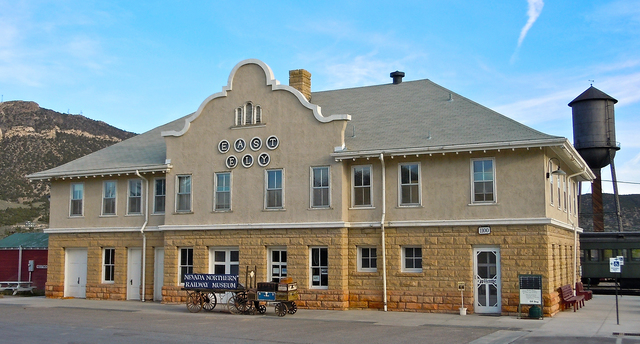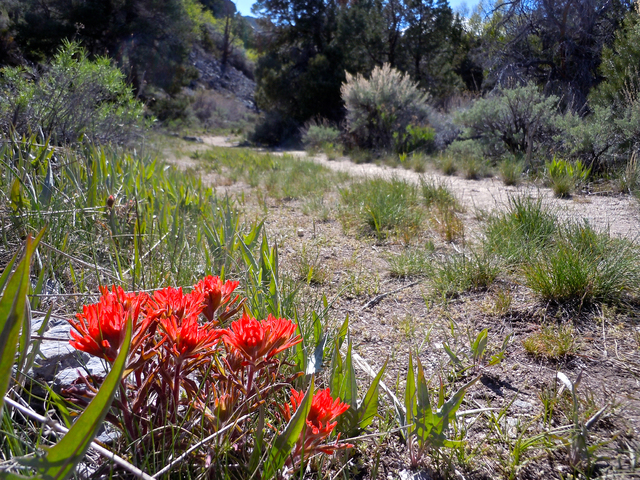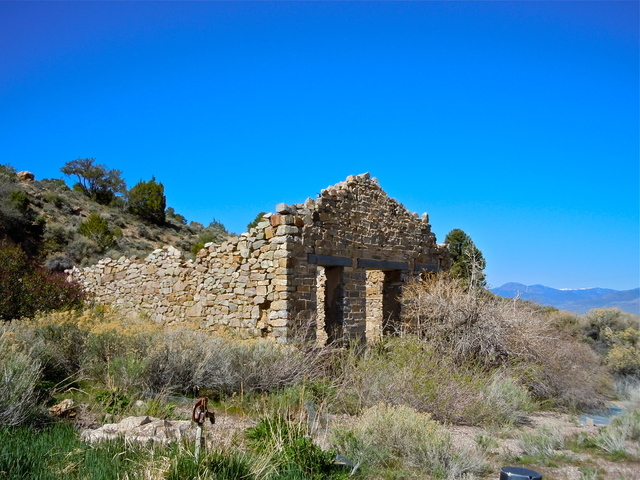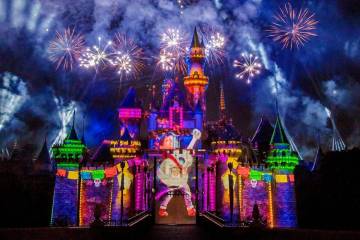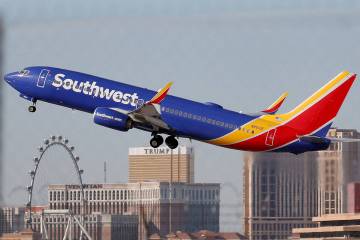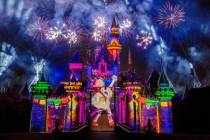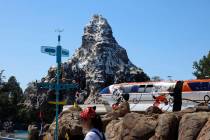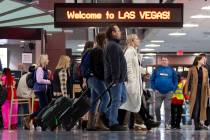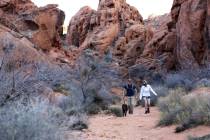Ely: home to culture, ‘buffet of must-see attractions’
For a town of 4,250, Ely packs a powerful tourism punch.
Thanks to its varied past, the eastern Nevada town has a buffet of must-see attractions and events. An Ely civic group’s motto, “Where the World Met and Became One,” is the theme for a cultural movement symbolizing the many peoples who have flocked to the area for sustenance and livelihood.
That motif is also the perfect framework for an Ely-area itinerary. Before it became the seat of White Pine County in 1887, Ely drew everyone from Native Americans who populated the area thousands of years ago to pioneers who made a hardscrabble living mining and ranching in the 1800s and early 1900s. Today, Ely is increasingly popular with tourists and artists who come from around the world to experience the city’s young but burgeoning cultural scene.
Now’s the perfect time to check out Ely and its environs. The town has shaken off its winter snows. Summer and early fall bring highs in the 70s and 80s, as well as a rich roster of things to see and do for Las Vegans seeking cooler climes. A small town where the start of Little League season makes the hometown newspaper’s front page, Ely is also showing economic revival because of a decade-old resurgence of its boom-and-bust copper-mining industry.
A visit is both a crash course in Nevada history and a great way to cultivate appreciation for the state’s diverse countryside and customs.
EARLIEST INHABITANTS
Long before Ely drew pioneers, prospectors and heat-weary Las Vegans, it was home to Paleo-Indians, and then Native American tribes including the Shoshone, the Goshute and the Paiute. Their cultures, birthed as long as 12,000 years ago, are still a defining aspect of the region, and no trip through the area is complete without paying homage to their lives.
We started at downtown Ely’s White Pine Public Museum, a jam-packed repository of artifacts from ancient to modern times. There, we found an expansive collection of centuries-old Shoshone baskets and tools. The museum also has vivid reminders of the mortal threats natives may have faced — take the complete, reconstructed 12,000-year-old skeleton of giant, short-faced bear, plus preserved specimens of animals that have roamed the countryside for millennia, including golden eagles, bobcats and mountain lions.
But few places hark back to the area’s earliest years like Great Basin National Park. The park, about 45 minutes east of Ely just off U.S. Highway 50, is the smallest and least-visited national park in the lower 48 states, and half a day in its spare but gorgeous environment gives an appreciation for the resourcefulness of Nevada’s earliest inhabitants, as well as a sense of the slower-than-molasses progress of geologic time.
The national park is the signature natural attraction in the Great Basin, named by explorer and Fremont Street namesake John Charles Fremont. The Great Basin is a massive series of arid, mountain-framed watersheds that ranges from California through central and Northern Nevada to Wyoming. At the national park, you can spot the jackrabbits and fish that the area’s earliest inhabitants hunted and enjoy the desert-hardy pine trees and bushes that supplied nuts and berries.
Where you go in Great Basin National Park depends on what you want to see. Upper Pictograph Cave, easily accessible from the park’s Pole Canyon trailhead, features ancient, abstract paintings of people and animals. Don’t overlook the park’s more natural highlights, though.
Other can’t-miss Great Basin attractions include the 12-mile Wheeler Peak Scenic Drive — along which we threw a few snowballs at 9,000 feet while temperatures in Las Vegas bumped against 97 degrees — and Lehman Caves, a subterranean marble cavern with rare formations including water-forged shields, rock curtains and cave bacon, named for the striated, golden-brown hues that show when the formations are lit from behind. Spring for the 90-minute Grand Palace Tour, which costs $5 per child ages 5 to 15, $5 for seniors with a Golden Age pass and $10 for other adults. And don’t worry about claustrophobia: We hate tight spaces, but we never felt seriously closed in on the tour, which takes you through a series of expansive “rooms.”
Great Basin also has several easy day hikes. Baker Creek Loop, at three miles, and Pole Canyon Trail, at four miles, are both easy options with gentle elevation gains along rushing creeks and through stands of ponderosa pines and meadows.
For more on life before neon, hang around into the evening for the park’s Dark Rangers program, which runs from Memorial Day to Labor Day on Tuesdays, Thursdays and Saturdays. Visitors enjoy astronomy lessons on park-provided telescopes.
The skies in Great Basin are among the darkest in the world, so the heavens look much as they did when the first natives moved into the area thousands of years ago. Nor has the view changed much since the region’s frontier days more than a century ago.
PIONEER SETTLERS
For many people from out of state, Nevada’s countryside is all about the Wild West and its pioneer settlers. Ely — founded in the 1870s as a trading post called Murry Station — is a perfect jumping-off spot to experience the state’s colorful frontier history.
The Pony Express, a horse-driven relay that ran mail along a 2,000-mile trail through eight states, launched in 1860. It ran for just 18 months, but remnants of the trail still stand about half an hour north of Ely, on U.S. Highway 93 at County Road 18. The stop, called Schellbourne Station, has a cluster of crumbling, wooden outbuildings, as well as more modern-day detritus, including ancient, abandoned cars. But look west on the dirt road that was the trail, with the massive, snow-capped Cherry Creek Mountains in the distance, and you get a sense of the awe-inspiring journey that riders faced on their mission across a harsh and unpopulated territory.
Schellbourne, which grew into a mining town after the Pony Express closed in 1861, isn’t the Ely area’s only ghost town. Other outposts include Minerva, an abandoned tungsten-mining town along Highway 93 south of Ely, and Hamilton, a silver-mining hotbed west of town that was once home to 10,000 people but that withered away after a devastating 1873 fire.
Because we were pressed for time, we chose to visit another famous ghost town, Osceola, just off Highway 50 on our way from Ely to Great Basin National Park.
Osceola, a busy gold-mining camp from 1872 to 1940, was one of the state’s longest-lived placer-mining camps, with a yield of nearly $5 million in the precious metal. The Friday morning we visited, we had a peaceful Osceola all to ourselves. We stopped first at the hillside cemetery at the town’s entrance, where we gazed out on the snowcapped Schell Creek Mountains and NV Energy’s massive Spring Valley wind farm thousands of feet below. We continued driving a couple of miles east on a twisting, hillside dirt road to see building ruins and abandoned mine workings. If you go, watch for no-trespassing signs: Most of Osceola sits on private property.
You don’t need to leave town for a taste of life along the frontier: Ely itself was forged from mining, mostly of copper. In 1906, construction of the Nevada Northern Railway gave Ely a major boost.
The railroad hasn’t been used to move copper since 1978. Today, it moves tourists. Visitors can experience the railway — including a train ride on a 1910 steam engine and 1928 Pullman passenger cars — at the Nevada Northern Railway National Historic Landmark’s complex just east of downtown.
We sprung for an ambling, 14-mile round-trip from the depot to the city’s original — and still operating — Robinson mining district, which has yielded more than 2 billion pounds of copper since 1902. On the ride, we saw Garnet Hill, where rock enthusiasts hunt for garnet crystals, and piles of ground, processed ore tailings that soared hundreds of feet into the sky. For added historic flair, the track runs its original route along the Lincoln Highway, or Highway 50. The day we rode, at least half a dozen motorists stopped to wave and take snapshots of the steam locomotive as it passed.
Summer is high season for the railway, which also offers dinner rides and a hands-on chance to engineer a locomotive. A tour of the engine room gets you up close to locomotives under reconstruction. One gem is a 1907 rotary snow plow engine, which will be the only operating steam plow of its kind in the country when restoration is complete in the next year or two.
Also dating back to the early 1900s is a series of homes we spied and later visited alongside the railroad north of downtown. The rustic shotgun homes, which make up Renaissance Village, are open for tours on Saturdays through the summer. There are five three-room homes that housed railroad workers, plus a two-room prospector’s cabin, a general store and a barn. Each railroad home is decorated in a different ethnic motif from French to Slavic, a nod to the diverse groups that flocked to Ely in its early mining heyday.
To fully appreciate more of the city’s pioneer-era architecture and history, it’s worth grabbing a copy of the White Pine County Tourism & Recreation Board’s booklet of walking tours, available at the White Pine Chamber of Commerce at 636 Aultman St. In about an hour, we took in the classic, Italianate White Pine County Courthouse with its copper cupola; the onetime home of Gov. Charles Russell, who led the state in the 1950s; and handsome houses and offices built by copper magnates. There’s even a former brothel, now transformed into apartments, that still sports provocative leaded-glass windows advertising its offerings.
That brothel isn’t the only thing that’s changed: Much of Ely is a very different place than it was 100 — or even 30 — years ago.
TODAY’S VISITORS
Today, regional leaders lure modern-day tourists with an array of contemporary art exhibits and civic events.
The Ely Renaissance Society — the group behind the restoration of Renaissance Village and authors of that motto we mentioned earlier — has spent the better part of 15 years transforming downtown into an outdoor art gallery. The society has commissioned more than 20 downtown murals and sculptures from artists around the world, depicting everything from cattle drives and Basque culture to ranching and copper mining. The society’s formal mural tour includes a brochure with descriptions of each piece of art.
There’s also a sculpture park and labyrinth for meditation in the heart of downtown, on Aultman Street. Sculptures include depictions of desert plants made from rifle shells, tipples used to load copper ore, and native flora and fauna. About two blocks east, in front of the courthouse, stands a sculpture of a Shoshone woman gathering pine nuts.
Downtown Ely even has a First Friday celebration, launched in 2013. This year’s events are scheduled for June and August and will include carnival games, music, food and booths from nearly 20 downtown businesses.
The Ely area will host several other events through early fall.
Pony Express enthusiasts re-enact the 10-day ride every year, and this year, they’re running the trail from June 11 to 21. Along the way, participants will relay the mailbags at Schellbourne Station.
The Snake Valley Festival near Baker, from June 20 to 22, will include beer tastings, an ice cream social, book and pie sales, a water fight and a parade. Cave Lake State Park, eight miles south of Ely, will host its Cocktails & Cannons modified-bathtub race, as well as canoe and kayak races, on June 28.
The city’s Fourth of July festivities are set to feature a parade, a quilt show, a concert and fireworks. An Art/Wine Walk is scheduled for July 26, and the Ely Shoshone Tribe’s annual Fandango, a celebration of tribal life complete with traditional foods, games, music, dances and arts and crafts booths, will happen July 25 to 27 at 250 Heritage Drive.
The Bristlecone Arts in the Park Festival is scheduled for Aug. 3 and 4, and the White Pine County Fair is scheduled for Aug. 15 to 17.
Great Basin National Park’s Astronomy Festival, from Sept. 18 to 20, will offer more than 30 telescopes — some as tall as 20 feet — for night-sky viewing. Volunteers will be on hand to help you understand what you’re seeing. The park also has full-moon hikes scheduled for June 12, July 12, Aug. 10 and Sept. 8.
Also, the Northern Nevada Railway will host its Fireworks Express train on the Fourth of July, as well as “haunted” Halloween train rides on Saturdays at 7 p.m. in October.
Contact reporter Jennifer Robison at jrobison@reviewjournal.com or 702-380-4512. Follow @J_Robison1 on Twitter.
If You Go
LOCATION: Ely is about 250 miles north of Las Vegas at the conjunction of U.S. Highways 93, 6 and 50.
DIRECTIONS: Two routes give you different sightseeing experiences. The longer route — U.S. 93 all the way to Ely — is classified by the Nevada Department of Transportation as a designated scenic route. It will take you through the quaint town of Caliente, and along the Great Basin Highway past soaring mountain ranges, four state parks and several stands of national forests. You may even see a golden eagle or two, as we did making the drive in early May. It gets you there in about 280 miles.
You can also take U.S. 93 to Nevada Highway 318, and then hop on U.S. 6. While not an official scenic route, this way offers plenty of spartan, desert beauty, including a jawdropping trip through the White River Narrows. It’s shorter, too, at about 240 miles.
To experience both routes, we took the scenic highway going up, and the slightly-less-scenic path coming back.
LODGING: Bristlecone Motel, 700 Avenue I, 775-289-8838 (pets allowed); Great Basin Inn, 701 E. Aultman St., 775-289-4468 (pets allowed, smoking rooms); Hotel Nevada & Gambling Hall, 501 Aultman St., 775-289-6665 (pets allowed, on-site restaurant, smoking rooms); Jailhouse Casino-Motel, 211 Fifth St., 775-289-3033 (breakfast included, fitness center, pets allowed, restaurant on-site, smoking rooms); La Quinta Inn & Suites, 1591 Great Basin Blvd., 775-289-8833 (breakfast included, fitness center, pool); Motel 6, 770 Avenue O, 775-289-6671 (pets allowed, pool, smoking rooms); Ramada Inn and Copper Queen Casino, 805 Great Basin Blvd., 775-289-4884 (breakfast included, pets allowed, pool, restaurant on-site, smoking rooms)
DINING: Cell Block Steak House (chops, seafood, Basque-style lamb), 211 Fifth St., 775-289-3033; Twin Wok (Chinese), 700 Park Ave., 775-289-3699; La Fiesta (Mexican), 700 Avenue H, 775-289-4114; Margarita’s (Mexican/steak house), McGill Highway 93, 775-289-6296; Silver State Restaurant (chicken-fried steak, elk burgers, Indian tacos), 1204 Aultman St., 775-289-8866; Evah’s (Italian), 701 Avenue I, 775-289-4271



